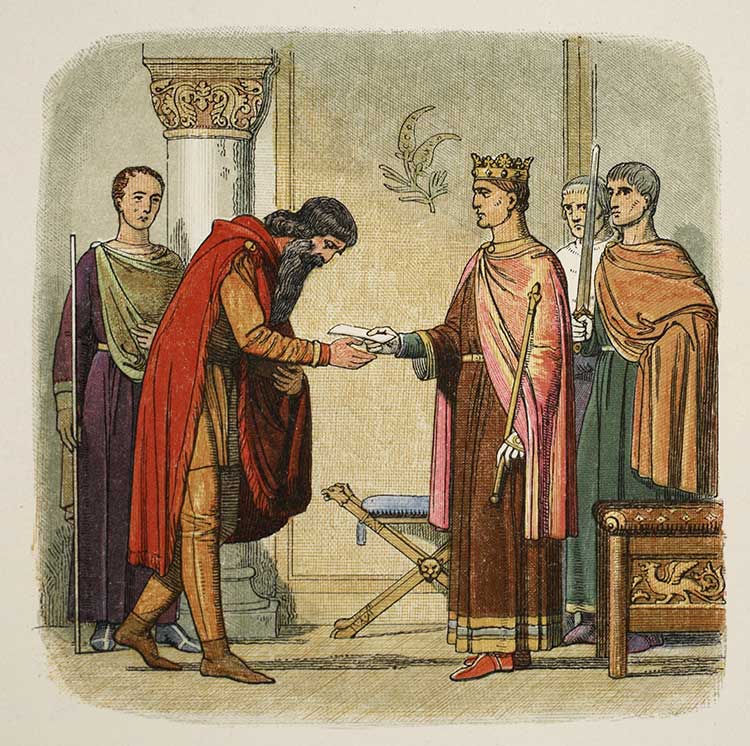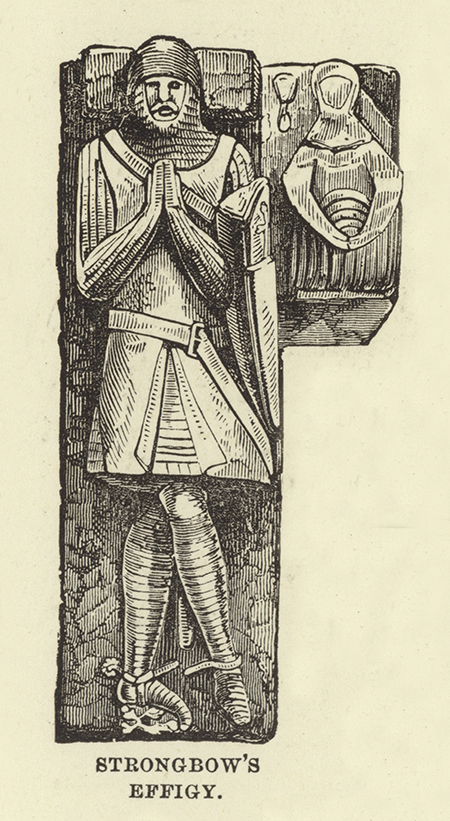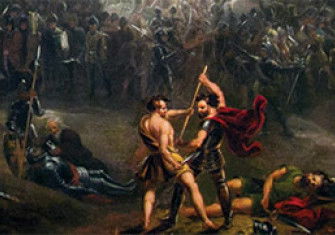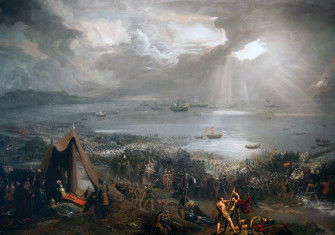The Other Invasion
The Anglo-Norman invasion of Ireland in 1167 sowed the seeds for centuries of tension between England and the Irish.

The 950th anniversary of the Battle of Hastings was met with much excitement in 2016, but this year little fanfare will accompany the milestone anniversary of another invasion, despite its lasting significance.
In the autumn of 1167, Dermot MacMurrough, the exiled ruler of Leinster, a kingdom in the east of Ireland, arrived back in the country with a band of mercenaries, kicking off what would become known as the Anglo-Norman invasion of Ireland.
The conflict has its roots in the long and complicated background of provincial Irish warfare and shifting alliances. At the time, Ireland was not completely united under a single king; instead, different regions retained their own dynasties, producing many rival rulers. Only the most powerful and successful could aspire to be ‘high king’ of Ireland – if not quite king of the whole island, at least the most important one. In theory, all the other kings were subordinate to him. This title was held from 1156 by the northern king, Murtagh McLaughlin.
At this point, Dermot MacMurrough was still the incumbent king of Leinster, and enjoyed the support of Murtagh. Dermot had previously incurred the wrath of another Irish king, Tiernan O’Rourke, who ruled the small but central kingdom of Breifne, by abducting his wife Dervorgilla in 1152. Dermot had also been forced to violently suppress his political rivals within Leinster. With the high king on his side, Dermot nevertheless managed to hold on to power in Leinster.
Then Murtagh made the fatal error of blinding the foster-son of one of his main allies during a feast. The ally switched sides and, with the help of Tiernan O’Rourke, attacked and killed the high king in battle in 1166. As a consequence, Rory O’Connor, the ruler of Connaught, in the west, became the most powerful ruler in Ireland.
With his patron and protector gone, Dermot found himself facing internal opposition from enemies within his own kingdom and external attack by Tiernan, who was perhaps still nursing a grudge despite his wife’s return. The result was exile: an Irish annal relates that, in 1166, Dermot was ‘banished eastwards across the sea’.
Once across the Irish Sea, Dermot turned to Henry II of England for assistance. While Henry refused Dermot direct help, he authorised the exiled king to enlist the support of lords in South Wales. As with many ethnic labels, the ‘Anglo-Norman’ stamp that has been placed on the ensuing invasion is not entirely accurate. ‘Cambro-Norman’ might be more appropriate, since most of the mercenaries and incomers were originally Normans or Flemings who had settled in Wales. The kings of England had thought it prudent to position new lords in problem areas such as the resistant Welsh Marches to minimise the need for direct royal intervention.
In 1167 Dermot and his mercenaries successfully reclaimed his ancestral lands within Leinster. The main force of his allies arrived later, in 1169, with the aim of claiming the whole region. At their head was Robert fitz Stephen, the uncle of Gerald of Wales, whose Conquest of Ireland is one of our main sources for the ‘Anglo-Norman’ invasion. Gerald’s partisan account focuses on the involvement of his own family, which means that the beginning of the invasion has been traditionally – but misleadingly – dated to 1169.

Another key player in these events was Earl Richard fitz Gilbert, best known for giving his nickname ‘Strongbow’ to a brand of cider. Entering the stage in 1170, Strongbow’s campaign culminated in the capture of Dublin and Waterford. Dermot gave his daughter Aoife in marriage to Strongbow, perhaps intending the earl to succeed him as king of Leinster, or perhaps simply cement their alliance (Dermot had other heirs).
Whatever his plans, Dermot died in 1171 and gained a poor posthumous reputation. While he was probably seeking only to regain his kingdom, he has been condemned in hindsight for setting in motion the events that lost Ireland its independence. Dervorgilla has not escaped blame either and is likened by Gerald of Wales to Cleopatra and Helen of Troy – women who brought disaster on their societies.
W.B. Yeats’ 1919 play The Dreaming of the Bones depicts a participant in the Easter Rising of 1916 encountering the ghosts of Dermot and Dervorgilla, who are cursed until a single Irishman can be found who would forgive them for bringing in the Normans. Mercenaries had been hired before during internal power struggles, while political exiles had long taken refuge on opposite sides of the Irish Sea. But in 1167 it led to colonisation by the English. Dermot began a process that he could not control.
It was not an ‘invasion’ in the traditional sense, but a piecemeal, drawn-out takeover. Certainly, Ireland as a whole was not conquered in the fairly decisive way that England had been a century before. Nor was this takeover driven by a monarch: Henry II only became directly involved in 1171, presumably nervous of the growing power of some of his barons. Strongbow took control of Dublin and Waterford, Ireland’s most important ports, and, as a consequence, posed a threat to Henry. The king responded by sailing to Ireland and asserting his authority. It was only logical that he would keep the profitable ports, with their longstanding trade with England, for himself. Henry and commentators favourable to him also used religion as an excuse for his intervention, claiming that the church in Ireland was in dire need of reform. In reality, the Irish church had embraced these European reforms from the start of the century.
Under the Treaty of Windsor in 1175, the Irish high king, Rory O’Connor, acknowledged Henry’s direct control of the ports of Dublin, Waterford and Wexford and the English king’s overlordship of the territory conquered by his vassals. Rory remained king of Connaught and overlord of the remaining parts of Ireland that had not been conquered by the incomers. He had to pay Henry tribute annually and swear him fealty. But this treaty could not curb the ambitions of the Anglo-Norman lords, who encroached beyond the agreed boundaries and provoked Irish counter-attacks. In 1177 Henry changed tack: he allowed further conquests and made his youngest son John (later known as ‘Bad King John’) ‘Lord of Ireland’, this time claiming it in entirety. Ireland became officially part of the Angevin empire.
These events are part of an underappreciated and understudied period in Irish history, between the Battle of Clontarf in 1014 and the Irish rebellion of 1798. They set the tone for Ireland’s troubled relationship with England, felt down the centuries and which continues to this day.
Caitlin Ellis is studying for a PhD at the University of Cambridge, researching the Scandinavian settlements of Orkney and Dublin.






